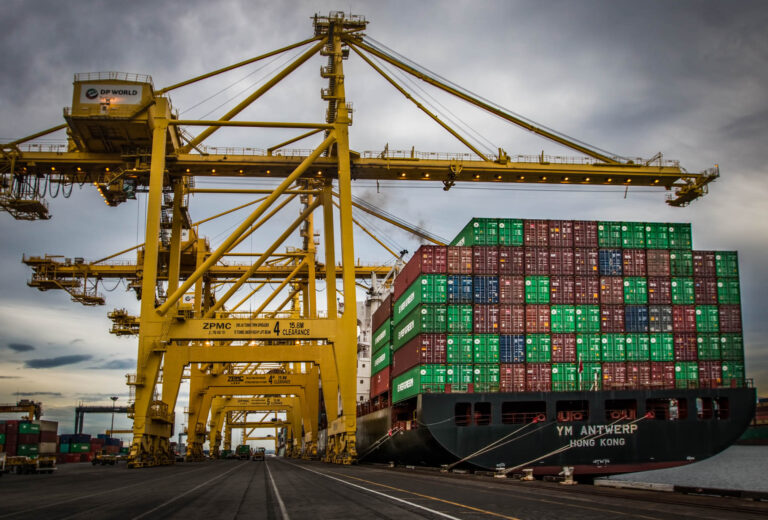Vivian Dong is a student at Harvard Law School.
The United States Trade Representative touts the Trans Pacific Partnership as having “the strongest protections for workers of any trade agreement in history.” On paper at least, the Trade Representative is probably correct about the TPP. The TPP requires that all parties to the agreement adopt and maintain laws recognizing the International Labor Organization’s fundamental labor rights and practices. Additionally, the United States has negotiated bilateral “consistency plans” with TPP Parties Vietnam, Malaysia, and Brunei. The consistency plans place additional legal requirements on the parties before they may export goods duty-free to the United States.
The TPP and the consistency agreements differ in content, scope, and enforcement mechanism, but they both suffer from the same fundamental problem: they all depend on the political will of the United States to enforce the labor standards they set out.
1. The Trans-Pacific Partnership
In addition to requiring all TPP parties to abide by the ILO fundamental principles, the TPP requires that all TPP parties have laws governing minimum wages, hours of work, and occupational safety and health. States cannot waive these laws in export processing zones, which often contain a heightened risk of labor abuses. The TPP prohibits the systematic non-enforcement of all the required labor laws. TPP parties, importantly, must settle labor disputes the same way they would settle commercial disputes, which includes the possibility of trade sanctions as a remedy.
However, the minimum wage, work hours, and occupational safety and health requirements of the TPP are not meaningful because the TPP does not set out what the content of those laws should be, just that there needs to be some governing law. Hence, a maximum workweek of 100 hours and a minimum wage of $1 a day would both fulfill the TPP requirements. So while the ILO principles present a substantive standard, the additional TPP requirements hinge on each country’s interpretation of those requirements.
As is usual in free trade agreements, the TPP limits dispute settlement of labor issues to party states’ governments. Only a government can invoke a dispute settlement proceeding against another government for violating FTA labor protections. Hence, only the United States government can raise a labor dispute against the other party state, not any individual or organization within the U.S. or within the party state. In contrast, private entities may bring a commercial dispute under the TPP under the now-famed investor-state dispute settlement provisions in the TPP. This suggests that the TPP does not take its labor provisions as seriously as its commercial provisions.
2. Consistency plans with Vietnam, Malaysia, Brunei
As the consistency plans are bilateral agreements between the United States and Vietnam, Malaysia, and Brunei only, all other TPP parties are only subject to the TPP, under which any TPP party government may sue. These consistency plans are side agreements to the TPP, much like how the NAFTA labor agreement (NAALC) was a side agreement to NAFTA. Among the TPP parties, Vietnam, Malaysia, and Brunei are three with particularly offensive labor rights records, hence the consistency plans.
Each consistency plan is tailored to each country. Migrant workers in Malaysia suffer many labor rights abuses, and so the U.S.-Malaysia consistency plan requires improvements to migrant worker labor rights like prohibiting employers from keeping a migrant worker’s passport. The U.S.-Brunei consistency plan addresses child labor, which is a particular problem for Brunei. The U.S.-Vietnam consistency plan requires that Vietnam remove its ban on independent unions and allow all independent unions the same rights as those affiliated with the government. These independent unions must also be allowed to affiliate with each other to form a broader national federation. This process is called “cross-affiliation.” All the consistency plan laws must be passed before Vietnam, Malaysia, and Brunei may export to the United States under the terms of the TPP. All consistency plans require regular meet-ups between the U.S. Trade Representative’s delegates and the non-U.S. country to check on the progress of enforcement.
Of the consistency plans, only Vietnam’s includes an enforcement mechanism independent from the TPP in the event the United States is dissatisfied with the enforcement. The consistency plan grants Vietnam five years to transition to a legal regime where cross-affiliation actually occurs. After the five-year period, the United States has two years to assess whether Vietnam has complied with its cross-affiliation obligation. If it has not, the United States may unilaterally suspend all tariff phaseouts agreed upon in the TPP that have not already occurred. This is different from the enforcement mechanism of the TPP, and the Brunei and Malaysia consistency plans, in that the United States does not have to go through dispute settlement procedures. If Vietnam disagrees with the United States on whether it has fulfilled its cross-affiliation obligation, then Vietnam may initiate dispute settlement procedures against the United States. Otherwise, the tariffs remain frozen.
Notably, the possible avenues of enforcing labor rights under the TPP – both the TPP itself and the consistency plans – hinge on the political will of the parties’ governments. Consequently, the AFL-CIO has denounced the labor provisions in the TPP as insufficient and merely cosmetic. The United States’ track record on taking action against labor rights abuses by its trading partners dashes hope that the TPP will actually protect its party states’ workers. Despite the NAALC allowing the United States to sue Mexico for violating minimum wage standards, occupational health and safety standards, and child labor laws, the United States never brought a labor rights suit against Mexico.
Prospects of U.S. action on labor violations under the TPP are not nil, however. The United States brought its first ever labor complaint against a trade partner in 2014, suing Guatemala under CAFTA. U.S. Trade Representative Michael Froman did not state specifically why the United States singled out Guatemala for suit. One possible reason is domestic political pressure. In 2008, the AFL-CIO and several Guatemalan labor organizations publicly submitted documentation of widespread failure by Guatemala to abide by CAFTA’s labor provisions. Guatemala is also quite uniquely hostile to labor interests. The International Trade Union Confederation named Guatemala as the most dangerous place in the world for the exercise of trade union activities, and claims that at least 73 trade unionists were murdered 2007-2014.






Daily News & Commentary
Start your day with our roundup of the latest labor developments. See all
December 12
OH vetoes bill weakening child labor protections; UT repeals public-sector bargaining ban; SCOTUS takes up case on post-arbitration award jurisdiction
December 11
House forces a vote on the “Protect America’s Workforce Act;” arguments on Trump’s executive order nullifying collective bargaining rights; and Penn State file a petition to form a union.
December 8
Private payrolls fall; NYC Council overrides mayoral veto on pay data; workers sue Starbucks.
December 7
Philadelphia transit workers indicate that a strike is imminent; a federal judge temporarily blocks State Department layoffs; and Virginia lawmakers consider legislation to repeal the state’s “right to work” law.
December 5
Netflix set to acquire Warner Bros., Gen Z men are the most pro-union generation in history, and lawmakers introduce the “No Robot Bosses Act.”
December 4
Unionized journalists win arbitration concerning AI, Starbucks challenges two NLRB rulings in the Fifth Circuit, and Philadelphia transit workers resume contract negotiations.